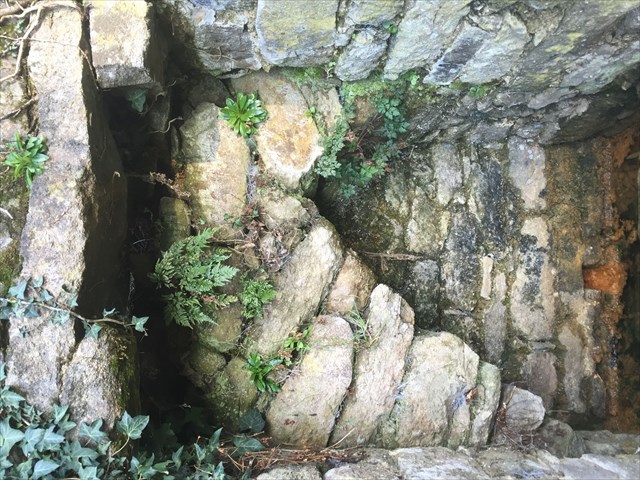Une source est une eau qui sort naturellement de terre, ou par métonymie le point où cette eau jaillit. C'est souvent l'origine d'un cours d'eau, mais des sources peuvent alimenter des mares, lacs ou s'écouler directement en mer, ou produire une eau qui disparaît à nouveau dans le sol.
Il existe différentes approches permettant de classer les sources :
- l'hydrochimie permet de classer les sources selon leurs qualités ;
- la géologie et pour être plus précis l'hydrogéologie qui cherche à expliquer l'origine et le fonctionnement de la source ;
- le thermalisme qui classe les sources selon leur température et l'usage qui peut en être tiré.
Une source nait de la conjonction de facteurs topographiques et hydrogéologiques comme une meilleure perméabilité locale. Si une source coule en permanence elle est dite pérenne. Dans les aquifères karstiques les sources peuvent ne se mettre à couler qu'en fonction d'un évènement pluvieux.

L'eau ferrugineuse est une variété d'eau minérale riche en ions Fe2+
. On a longtemps attribué à ces eaux le mérite de prévenir (ou guérir) l'alcoolisme car elles apporteraient le fer qui vient habituellement d'une consommation régulière d'alcool ayant pour effet d'augmenter la teneur en fer dans le sang. La conséquence en aurait été la disparition de l'addiction.
Une source d'eau ferrugineuse est appelée un pouhon
L'eau ferrugineuse de cette fontaine a déposé sur les pierres, et particulièrement sur le déversoir, une rouille rutilante.
Le sous-sol est en effet ici constitué de la granulite légèrement feuilletée du massif de Dinan, où aboutit en cet endroit, perpendiculairement à la vallée, un filon de diorite. La rouille proviendrait donc soit de la diorite, roche très dure contenant du fer, soit de la dissolution du mica blanc de la granulite.
Granulite :Variété de granit à mica blanc, de teinte généralement rosâtre, de grain très fin, appartenant à la deuxième période de roches éruptives anciennes
Diorite : roche éruptive à structure grenue, contenant du feldspath calcosodique, du mica, de l'amphibole et parfois un peu de pyroxène.
pour valider cette earthcache ,il vous faudra répondre aux questions suivantes :
1:en arrivant au niveau de la fontaine ,au premier coup d œil ,quelle particularité remarquez vous sur le sentier devant celle ci ?
2:mesurez la largeur de la goulotte qui sort de la fontaine
3:à l aide d un récipient (de préférence transparent )récupérez un peu d eau et secouez !!l eau vous paraît elle gazeuse ?
4:une photo de vous ,votre GPS ,votre GC perso ou tout autre objet vous représentant dans le jeu ,accompagnant votre log serait la bienvenue !!
logguez cette cache found it et envoyez moi vos réponses soit via le centre de messagerie geocaching.com soit via mon profil et je vous contacterais en cas de problème !!!
-------------------------------------------------------------------------------------------------------------------------------------------
A source is water that naturally out of the ground , or by metonymy the point where the water gushes .
This is often the source of a river , but sources can feed ponds , lakes or flow directly into the sea or produce water that disappears again into the ground.
There are different approaches to classify sources : water chemistry classifies sources according to their qualities ; geology and hydrogeology be precise , which seeks to explain the origin and operation of the source; hydrotherapy which classifies sources according to their temperature and the use that can be drawn. A source springs from a combination of topographic and hydrogeological factors as better local permeability. If a source flows constantly it is called permanent . In karstic sources can not begin to flow as a function of a rainfall event .
The ferruginous water is a variety of mineral water rich in Fe 2+ ions
. It has long been attributed to these waters to prevent the merit (or cure) alcoholism because they bring iron which usually comes from a regular drinking having the effect of increasing the iron content in the blood. The result was the disappearance of addiction.
A ferruginous water source is called a pouhon
The ferruginous water from this fountain deposited on the stones, and particularly over the spillway, a shiny rust.
The basement was here consists of puff slightly granulite massif Dinan, which resulted in this place, perpendicular to the valley, a diorite sill. Rust therefore come either diorite, very hard rock containing iron, or the dissolution of white mica granulite.
Granulite: white mica granite variety, usually pinkish hue, very fine grain, belonging to the second period of ancient volcanic rocks
Diorite: Igneous rock granular structure containing Sodium calcium feldspar, mica, hornblende and sometimes a bit of pyroxene.
earthcache to validate this, you need to answer the following questions:
1: arriving at the fountain, at first glance eye, you notice any feature on the path to this one?
2: Measure the width of the channel that comes from the fountain
3 to using a container (preferably transparent) recover a little water and shake water !! it seems you gas?
4: a picture of you, your GPS, your GC or any other personal object representing you in the game, accompanying your log would be welcome !!
first log this cache found it and send me your answers either via the message center geocaching.com or via my profile and I will contact you in case of problems !!!